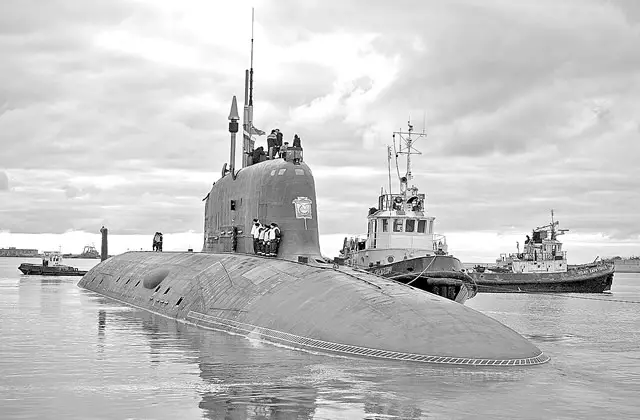Breaking news
Russia might reduce submarine programs in future according to CSIS.
| 2016
They mentioned that the Russian Navy is planning to
receive eight to 10 Project 955/955A Borei-class (NATO reporting name:
Borey/Dolgorukiy-class) nuclear-powered underwater combatants armed with
submarine-launched ballistic missiles (SSBN), eight to 10 Project 885/885M
Yasen-class (Severodvinsk-class) nuclear-powered submarines armed with
anti-ship/land-attack cruise missiles (SSN), and "a mix" of
diesel-electric attack submarines (SSK). It should be noted that the Project
955 submarines feature hulls built in the early 1990s, while the Project
955A SSBNs will receive newly produced hulls. "The Russian Navy aims
to improve on its capabilities in the undersea domain. This includes the
development of new submarines, new propulsion technologies, advanced sensors,
and unmanned underwater vehicles (UUV)," the authors of the report
concluded. They mentioned that the current cost of the serial Yasen-class
submarines reaches USD1.68 billion per unit, while the type ship`s cost
was USD700 million. "It is unlikely that Russia`s shipbuilding budget
can support SSNs costing upwards of USD2 billion, given its other priorities
and fiscal constraints," the specialists of the CSIS center pointed
out.
At the same time, the US experts estimate the combat capabilities of the Severodvinsk-class SSNs at the highest level. "Despite (the aforementioned) issues, the end product appears to be a technically excellent submarine that has made Western naval leaders sit up and take notice," they said. The Yasen-class SSNs have become the first Russian underwater combatants equipped with advanced spherical sonars and vertical launch tubes (VLT) for cruise missiles. The nuclear reactor of a Project 885 submarine does not require costly mid-life refueling and overhaul. "Taken together, the Russians appear to have a vessel that approaches and in some cases surpasses the most recent US SSNs," the specialists concluded. They added that the Russian Navy is considering a more affordable follower to the Project 885/885M SSNs. However, the development of Russia`s SSK is being challenged with uncertainties. Despite their high technological level and the best cost-effectiveness ratio, the Project 636 (Improved Kilo-class) diesel-electric submarines are to be replaced in the 2020s-2030s. "Russia`s SSK ambitions are the most uncertain due to the development issues facing the (Project 677) Lada-class, the preplacement for the Kilo-class. It appears that Russia may be moving on from the failed Lada-class altogether with a new design, the Kalina-class," the specialists of the CSIS center said. The advanced Kalina-class SSKs are supposed to receive an air independent propulsion system (AIP) being actively developed by the Russian shipbuilding industry. "The exact timeline for these vessels (Kalina-class SSKs) is unclear and likely dependent on the completion of the new propulsion system. The introduction of AIP technology has been described as a near-term goal for the past decade with little to show in terms of end product. The system has completed shore-based testing, and Russia claims it will be ready for operation in the next five to six years," the authors of the report emphasized. The US experts also revealed their doubts about the Russian UUV development programs. "Unmanned systems require a mastery of technologies that Russia has never demonstrated a competency in developing or producing. Russia…will likely be unable to match future Western-style UUVs in terms of either numbers or capabilities," the experts of the CSIS center concluded. They added that the shortage of skilled workers, the obsolescence of several microelectronic technologies, and lack of machine tooling may complicate the development of the national submarine programs. © Copyright 2016 TASS. All rights reserved. This material may not be published, broadcast, rewritten or redistributed. |
|||




























